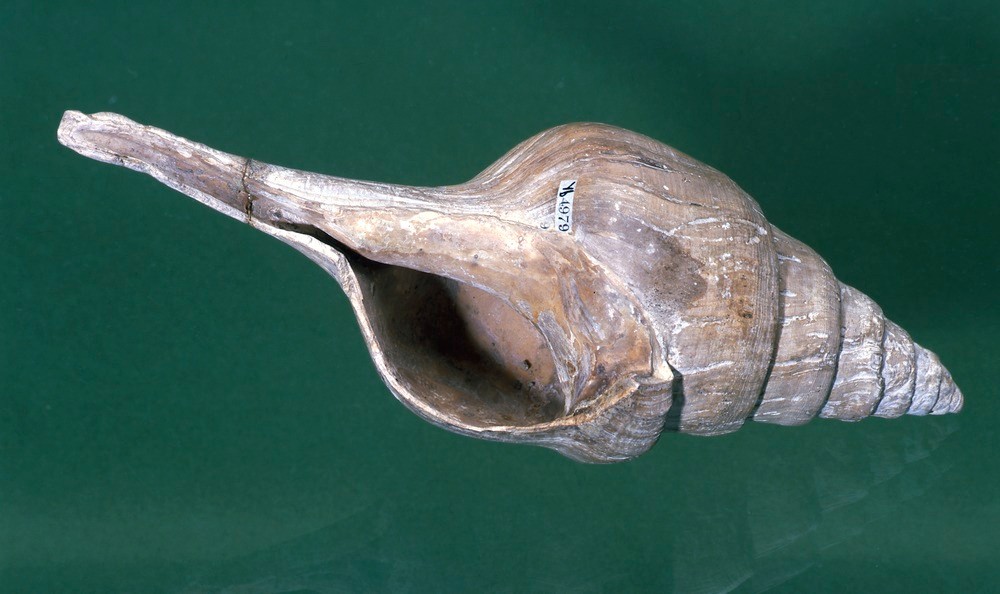| P number: | P550282 |
|---|---|
| Caption: | Clavilithes macrospira, a gastropod from the Eocene. |
| Description: | Clavilithes first evolved in the Palaeocene, about 55-65 million years ago, but the illustrated species, Clavilithes macrospira, is from the Eocene deposits of southern England (and about 50 million years old). Modern forms of this gastropod have only a single gill, a feature seen in the more advanced gastropods, the caenogastropods. Clavilithes macrospira has a fusiform shaped shell due to the presence of a long siphonal canal which housed a siphon. The siphon was used to draw clean water across the gill. The diameter of each whorl is larger than the preceding one, so that the shell has a 'stepped' appearance. Some specimens have ribs on the earlier whorls, but later whorls are smooth. Gastropods are molluscs with a muscular foot, eyes, tentacles, and a rasp-like feeding organ (a radula), although only the coiled or conical shell is fossilised. The earliest Cambrian species were marine, but gastropods now colonise fresh water and the land. Classification is based mainly on soft body parts, which are not fossilised, and although there is uncertainty, most fossils appear to fall into one of three groups: 1. Archaeogastropods which have two auricles in the heart, two gills and two kidneys. 2. Caenogastropods which have one gill, auricle and kidney and sometimes a siphon. 3. Pulmonates which have a lung. |
| Photographer: | Unknown |
| Copyright statement: | Unknown |
| Orientation: | Landscape |
| Size: | 345.70 KB; 1000 x 594 pixels; 85 x 50 mm (print at 300 DPI); 265 x 157 mm (screen at 96 DPI); |
| Average Rating: | Not yet rated |
| Categories: | Best of BGS Images/ Fossils |
Reviews
There is currently no feedback

